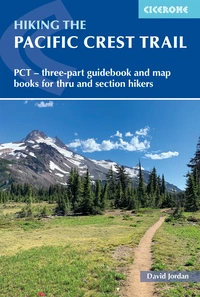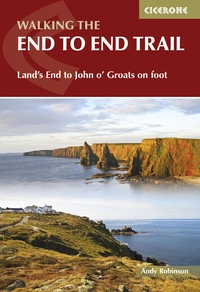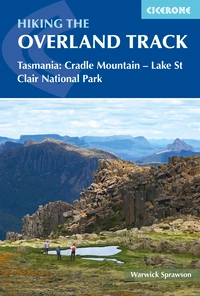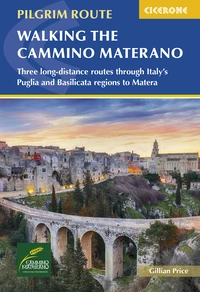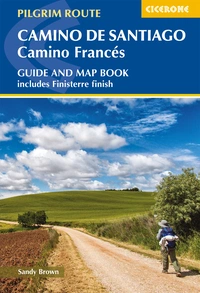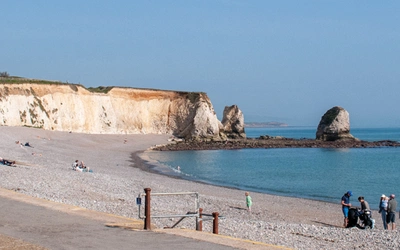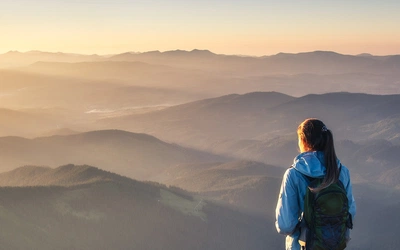Thru-hiking the Continental Divide Trail: The frozen finish and final thoughts
Owen Eigenbrot has reached the end of the long walk from Canada to Mexico on the Continental Divide Trail and reflects on the final miles that took him there. The Mexican border brings a bittersweet conclusion to a summer spent living in the dirt and sleeping under the stars while discovering that cold knows no borders and that the journey extends beyond the trail.
Winter is here and I find myself sitting down for most of the sunlight hours rather than walking from dawn until (well beyond) dusk every day. The mountains slumber under a deepening blanket of snow and my beard has been unceremoniously shorn from my face, but I am warm, taking advantage of the comforts of modern society, mind in the past though the future begs for my attention.
On the afternoon of 21 November, surrounded by desert and rainbows, under a tumultuous gray sky, the trail ran out. For nearly five months, this was a regular occurrence, usually resolved by hiking ahead with faith that a cairn would guide the way or by whipping out the GPS to diagnose a wrong turn. Losing the trail was just part of the daily routine. But this time was different. Although the flat desert and mountainous horizon looked the same in every direction, a barbed wire fence cut through the scrub, signifying a division of the land, a border between nations, as well as a milestone in my life. After 149 days on the trail, my life before hiking the CDT was a distant memory. Even the beginning of the CDT, the rainy days in Glacier National Park, were an unfathomably large distance behind me in time and miles. The adventure spanned an entire (large) country, multiple seasons, many landscapes, ranges and cultures. It was too big to comprehend before and, even with it fresh in my mind, the same is true now.
Since my last update, I have hiked through the high ranges of the Colorado Rockies, kicked through fresh powder in running shoes yet dodged the hike-ending snows of winter, discovered that the desert can be colder than the mountains, soaked in hot springs and lost track of time in the vastness between horizons. From Grand Lake, CO, there were 1200 more miles to Mexico, covered over the course of 64 days. Of the 149 nights between Canada and Mexico during the entire 2716-mile journey, 32 were spent under a roof, 72 in a tent and 45 under the stars. Four pairs of shoes carried me the whole way with rubber left to spare, and I eluded laundry and showers for a maximum of 353 and 255 miles respectively. My clothes are ready for the incinerator and my gear hosts a funk that defies the promises of the strongest cleaning products, a comforting reminder that it was all real, that it happened. Besides that, my legs are strong and my brain is full of stories. Nostalgia already casts a rosy hue and blurs the rough parts. Yes, the CDT ran out, but the memories have not.

A cold, but clear Colorado
The big question that had haunted my steps since before I started hiking in June has been answered. Will I make it through the Southern Colorado Rockies before the winter snows wipe away the trail? The answer is, well kind of. Cold yet beautiful weather bathed the Divide in abundant sunshine for most of the journey south from Grand Lake. With long miles and days spent riding exposed ridgelines between 10,000 and 12,000 feet, the wind at times felt as if it was blowing straight from the Arctic, but the trail was clear, mostly. Bundled in all my layers, I summited Mt. Elbert, the Colorado high point at 14,440ft, on 1 October. For weeks afterward, I rode a golden wave of aspen during their autumnal transition from green to yellow, on a scale that I could not have imagined, a treasure only revealed by suffering the cold. Still the weather held, apart from a pair of snow dustings, despite the warnings from numerous locals that ‘winter can come anytime’.
Even the grand finale, 120 miles through the remote and rugged San Juan Mountains, greeted my partner and me with ample opportunity to apply sunscreen. The frozen creeks, brown grass and lack of wildlife were a dead giveaway that we were hiking on borrowed time, but the solitude was fantastic. It wasn’t until the final 65 miles of Colorado that snow finally affected our route choice. Dangerous cold and wind with drifting snow pushed us to a dirt road at 8000ft instead of the trail at 12,000ft. Waking the next morning to an even -16°C assured me that the right choice had been made. So yeah, although snow would chase us deep into New Mexico, the weather allowed us to make it through the highest portions of the CDT, extinguishing the smoldering question held in my chest and lifting a tremendous weight from shoulders already shrugged under a heavy pack.
New Mexico magic

With so much energy and worry focused on beating the snow in Colorado, I admit that my knowledge of New Mexico prior to stepping across the border just south of Cumbres Pass was almost nonexistent. I expected desert. Warm desert. Flat desert. Miles of cruising across a land with more cactus and cow troughs than trees and creeks. Deserted dirt roads would free my mind and lift my gaze from ground to sky. In reality, New Mexico was more. It delivered more challenges and more variety. More beauty and more flavour. The desert didn’t even really begin at the border. Northern New Mexico felt an awful lot like Southern Colorado, with frigid temperatures and snow forcing a tea break in a less-than pristine pit-toilet on one occasion.
Sand and red rock cliffs finally made an appearance for a blissful day of hiking in shorts once more through Ghost Ranch, but the next day saw the trail climb back to near 10,000ft in the San Pedro Peaks Wilderness. A blizzard the next morning coated my beard and eyelashes in ice, and even back down at 6000ft, surrounded by nothing but thigh-high scrub and sandstone, waking to frozen water bottles was a regular occurrence. The lowest temperature of the CDT did not come at 12,000ft in Colorado. It came at 8000ft in New Mexico. A balmy -19°C in the sun. I took to hiking with a water bottle in my jacket during the day after one too many swigs of stinging slush-water. Preparing evening meals became such an unpleasant task in the cold dark that dinners became a mixture of peanut butter, tortillas and Oreos. No complaints about that, though.
However, while the cold thoroughly wore out its welcome, I could hike forever through the park-like forests of Ponderosa Pine, explore endlessly along the banks of the meandering Gila River, disappear into the desert landscape where geology rules, and double my weight by eating the local bean and green chili burritos. New Mexico claims to be the Land of Enchantment. This is no bluff. The ancient stone tells stories, mysterious creatures live out mysterious lives, the wind sings songs to those willing to listen and there is even a place called Pie Town. The weather did eventually warm, the terrain did flatten, and the desert miles did start to come easy. Riddles outnumbered wrong turns during entire days of roadwalking. Laughing with friends replaced cursing the cold. Reminiscing about the past few months overwhelmed worries of the future. Even when rain came to dampen the last few days before reaching Mexico, the rainbows that came with it were the most vibrant that I have ever seen. The glow of numerous sunrises and sunsets will haunt my dreams. Magic. For me, that was the New Mexico portion of the CDT in a word.
Challenges
As a side effect of living a transitory life for months, one learns to let go of expectations, and planning more than a few days in advance becomes a risky practice. The terrain is a mystery, the weather is fickle, the hiker is merely human. Plans lose meaning, total surprises become rare. But speaking in general terms, a few aspects of hiking across New Mexico left me questioning assumptions so fundamental that I had no chance of avoiding surprise. The bottomless depths of desert cold were one. I’ve already spoken about the cold more than I care to, but one more time, I will say that it changes most aspects of living outdoors. This was a powerful lesson that I learned over and over again during fall in Colorado and the beginning of winter in New Mexico. I thought I knew what it meant to backpack in cold weather. In my previous update, I mentioned receiving the first taste of winter as I crossed from Wyoming into Colorado with 2°C and rain. Little did I know that in several weeks, my partner and I would be combining drips from frozen bottles to brew a pathetic mug of tepid tea in the desert. 2°C doesn’t seem so extreme now. I had expected water to be scarce in New Mexico, but I did not expect the biggest challenge to be finding liquid water. Previously trickling springs were frozen and sometimes filterable water could be accessed only after breaking through inches of ice into a murky cow trough. Now I know that couscous can freeze in minutes, even while I scarf spoonfuls as quickly as my body will allow. I’m not sure I wanted to know.

Another shocker was the shortening of daylight hours with the progressing season. I’m not going to claim that it is easy to hike 25 miles in a day just because the earth is bathed in soul-enriching sunshine for 16 hours, but it is more manageable than covering the same distance with fewer than 11 hours of daylight. At the beginning of the CDT, my legs limited the miles I could cover in a day. On final approach to the southern terminus, it was my mind. After four and a half months of living immersed in the flow of nature, my subconscious felt fulfilled in its day’s quest once darkness descended. No matter that it was only 5pm, before a reasonable dinnertime even. My mind craved rest, although my legs felt fresh. I am not a fan of night hiking, toiling for hours by headlamp, but I came to tolerate it. It became a necessity.
Highlights
How to choose the highlights from so many wonderful landscapes, each so special and unique that they speak in different languages. The mountains fill the mind with curiosity and doubt, rivers strike physically, pulling at feet and legs, the desert swells with skin-tingling emotion, trees whisper in the breeze and howl with the wind. All I know is that a part of me responded more strongly to some languages than others.
Swirling near the top of my list are the Collegiate Peaks in Colorado for their brazen beauty, imagination-spanning views, and iconic ridgewalks through snow, sun and wind. The remoteness and altitude of the San Juans a week later satisfied a deep hunger to probe the boundary between earth and sky. Those mountains left me feeling humble and small in way that can be hard to find in a shrinking world. Struggling through willows on a nonexistent trail between steep cliffs carved by the Middle Fork of the Gila River and feeling the water’s relentless tug reminded me of my impermanence in the scope of history. Yellow-turning aspen in Colorado and rainbows in the desert hit with such embarrassing splendor and violent vibrancy that hiking on was a legitimate challenge.
Besides the objective beauty, I must mention how fortunate I was to find an incredible trail family. Muddy ponds turned into dares, roadwalks inspired impromptu dance parties, and mundane phrases transformed into nonsensical inside jokes. People can learn a lot about one another over a day of hiking. We orbited in each other’s company for thousands of miles and share a bond to match. Spending the last night at the border surrounded by friends is a moment that I cherish as highly as any other.

So, while my thru-hike of the CDT is complete, my connection to the trail and my experiences on it are still strong. In fact, the only thing that ended that day in November was my marriage to the inflexible ethos of a thru-hike. My friends are still friends, the mountains still call for exploration, the Gila still flows, the trail still exists and time still marches on, as does my relationship with the CDT. There are numerous alternate routes that beg me to explore what I missed this summer, and I will. Many places deserve a closer look, calling for me to return, and I will. The CDT has many faces, but it is also a mirror. My interpretation of the trail is profoundly personal, and the CDT is different for everyone. I know that when we meet again, I will find some things the same, but also completely new truths that reflect how I have changed. I am sad that this adventure is over, but take comfort in knowing that it will begin again. For me or for someone else, the CDT is ready to give.
It has been difficult to sum up here even just the second half of my journey on the CDT. A trip of this magnitude deserves more contemplation and more words. I have tried my best to do this on my daily blog at hikefordays.com but still fall short of capturing the majesty of this trail. However, if you would like to read more about the CDT or ask questions, that might be a good place to find yourself. It also includes some shorter Cicerone-inspired trip write-ups from the Alps and Mallorca if tackling the entire 5-month CDT seems like a daunting task. Additionally, my partner and I used this hike to raise funds for Big City Mountaineers, who take under-resourced youth on mentorship-based wilderness backpacking excursions. We are passionate about this cause and would appreciate any support tremendously. For more information on BCM, head to our fundraising page: give.classy.org/cdt

